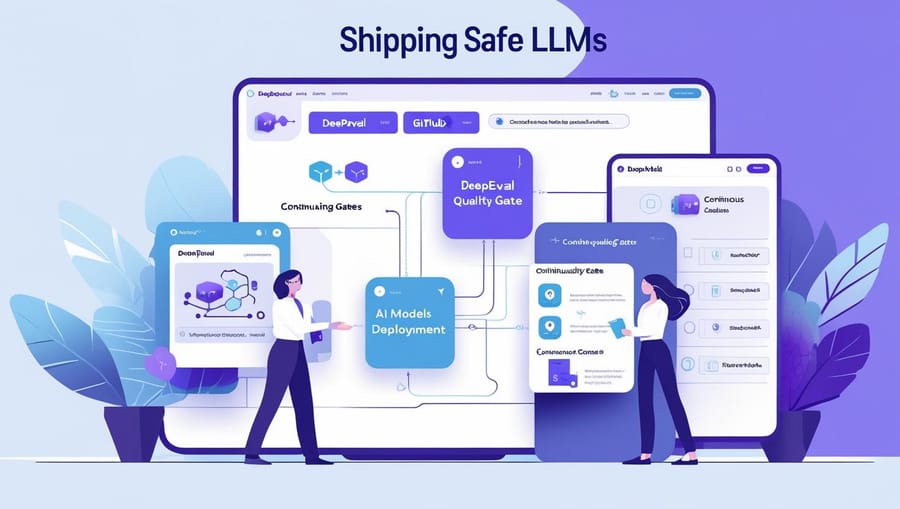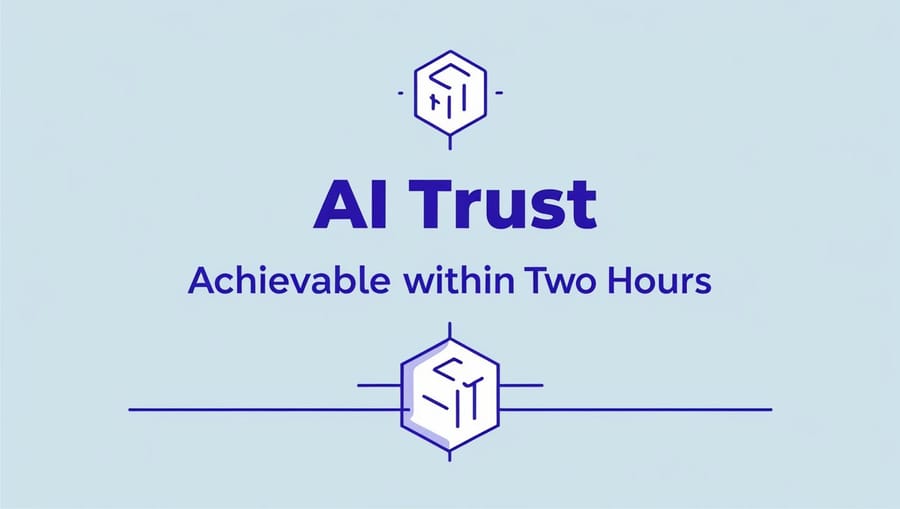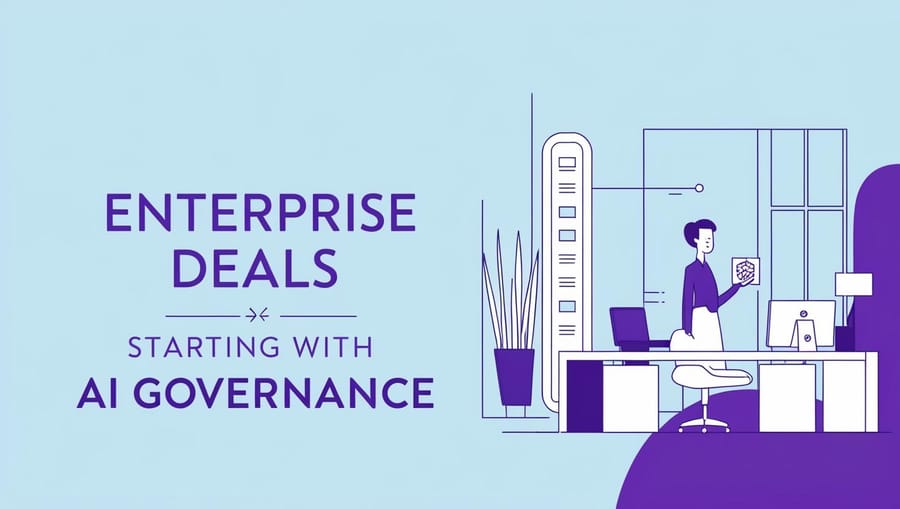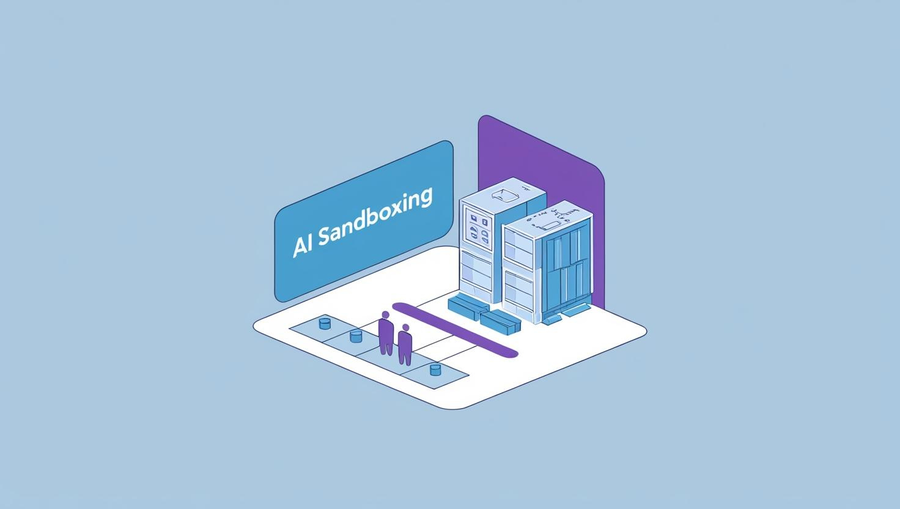Introduction: The Need for AI Guardrails
Artificial Intelligence (AI) is revolutionizing industries, from healthcare and finance to HR and cybersecurity. However, without proper safeguards, AI systems can introduce risks such as bias, security vulnerabilities, regulatory non-compliance, and unintended consequences. Organizations must implement AI guardrails—structured policies, processes, and technologies—to ensure AI remains trustworthy, fair, and aligned with ethical standards.
This guide provides a practical approach to designing AI guardrails, ensuring responsible AI use while meeting compliance requirements such as the EU AI Act, NIST AI RMF, and ISO 42001.
1. What Are AI Guardrails?
AI guardrails are frameworks, policies, and technical measures designed to ensure AI systems operate safely, ethically, and within regulatory boundaries.
Why AI Guardrails Matter:
✅ Prevent Bias & Discrimination – Ensure fairness in AI decision-making.
✅ Enhance Transparency & Explainability – Make AI models interpretable and accountable.
✅ Ensure Compliance with Regulations – Align with NIST AI RMF, EU AI Act, and GDPR.
✅ Mitigate AI Security Risks – Protect against adversarial attacks and data breaches.
✅ Foster Public & Stakeholder Trust – Build confidence in AI-powered decisions.
🔹 Example: A bank using AI-driven credit scoring must implement guardrails to detect and mitigate biases in lending decisions.
2. Key Components of AI Guardrails
Building effective AI guardrails requires a combination of governance, risk management, and technical safeguards.
🔹 1. AI Governance & Ethical Guidelines
- Establish AI ethics policies to guide development and deployment.
- Create an AI oversight committee with cross-functional teams.
- Implement human-in-the-loop (HITL) oversight for high-risk AI applications.
🔹 Example: A hospital deploying an AI diagnostic system includes doctors in the final decision-making process to ensure medical accuracy.
🔹 2. Bias Detection & Fairness Audits
- Conduct AI bias audits before and after deployment.
- Use fairness-enhancing techniques like adversarial debiasing and reweighting.
- Monitor AI models for disparate impact across demographics.
🔹 Example: A hiring AI tool undergoes fairness testing to ensure it does not favor one gender or ethnicity over another.
🔹 3. AI Transparency & Explainability
- Use explainable AI (XAI) tools such as SHAP, LIME, and model interpretability frameworks.
- Maintain detailed AI decision logs for audits and regulatory compliance.
- Provide user-friendly explanations for AI-driven outcomes.
🔹 Example: A financial services company implementing AI-driven loan approvals ensures that rejected applicants receive clear explanations for their denial.
🔹 4. AI Security & Adversarial Robustness
- Implement AI security testing to detect adversarial attacks.
- Protect AI models with differential privacy and secure federated learning.
- Establish continuous monitoring for AI-driven anomalies.
🔹 Example: A fraud detection AI system undergoes penetration testing to prevent cybercriminals from manipulating transaction approvals.
🔹 5. Compliance & Regulatory Adherence
- Align AI policies with global AI regulations and industry standards.
- Maintain AI compliance documentation and audit trails.
- Implement automated compliance dashboards for real-time tracking.
🔹 Example: A telecom provider deploying AI chatbots ensures GDPR compliance by automatically logging user interactions and consent management.
3. Step-by-Step Guide to Implementing AI Guardrails
🔹 Step 1: Define AI Use Cases & Risks
✅ Identify AI applications within your organization (e.g., HR automation, fraud detection, customer service).
✅ Assess potential risks related to bias, transparency, security, and compliance.
✅ Establish risk categories (e.g., high-risk AI, low-risk AI).
🔹 Example: A healthcare provider classifies AI-driven medical diagnosis as a high-risk AI application, requiring strict oversight and explainability.
🔹 Step 2: Develop AI Governance Policies
✅ Establish AI ethics guidelines aligned with industry frameworks.
✅ Define accountability by assigning AI governance roles (data scientists, compliance officers, risk managers).
✅ Ensure stakeholder collaboration between legal, IT, and AI teams.
🔹 Example: A multinational e-commerce company implements an AI ethics board to oversee recommendation algorithms and personalization models.
🔹 Step 3: Implement Technical Safeguards
✅ Use AI fairness testing tools to detect and mitigate bias.
✅ Implement real-time AI monitoring systems to flag anomalies.
✅ Apply differential privacy techniques to protect sensitive user data.
🔹 Example: A financial services firm integrates bias detection algorithms to monitor AI-driven credit scoring decisions in real time.
🔹 Step 4: Conduct Regular AI Audits & Compliance Reviews
✅ Perform AI risk assessments and security testing at scheduled intervals.
✅ Document AI decision-making processes for regulatory audits.
✅ Automate AI compliance tracking through AI governance platforms.
🔹 Example: A cybersecurity firm audits its AI-powered threat detection system every quarter to prevent security vulnerabilities.
🔹 Step 5: Train Teams & Foster AI Literacy
✅ Educate employees on AI best practices, ethical AI, and risk management.
✅ Provide training on AI explainability tools and fairness audits.
✅ Encourage cross-functional collaboration between AI developers, compliance teams, and business leaders.
🔹 Example: A tech company conducts annual AI ethics training for engineers developing natural language processing (NLP) chatbots.
4. Future Trends in AI Guardrails & Governance
🚀 Stronger AI Regulations – The EU AI Act and U.S. AI Bill of Rights will introduce stricter AI compliance rules.
🚀 AI Risk Management Automation – AI compliance dashboards will become industry standards.
🚀 Self-Regulating AI Systems – AI models will integrate real-time bias detection and automatic model corrections.
🚀 AI Governance-as-a-Service (GaaS) – Companies will outsource AI risk management to specialized firms.
🔹 Example: AI governance solutions will integrate with cloud platforms like AWS, Google Cloud, and Microsoft Azure, enabling real-time compliance tracking.
5. Practical Examples and Scenarios
🔹 1. AI Guardrails in Financial Services (Preventing Bias in Credit Scoring)
Scenario:
A bank deploys an AI-driven credit scoring model to automate loan approvals. However, an internal audit finds that the AI model is disproportionately rejecting applications from certain minority groups due to biased historical data.
Guardrail Implementation: ✅ Bias Detection & Fairness Audits – The bank integrates AI fairness tools (e.g., SHAP, AI Fairness 360) to identify and mitigate biased decision-making.
✅ Human-in-the-Loop Oversight – A compliance officer reviews AI-driven loan rejections to ensure fair assessments.
✅ Regulatory Compliance Check – The system aligns with Fair Lending laws and GDPR data transparency regulations.
🔹 Outcome: The bank reduces AI bias, ensuring fairer credit assessments while maintaining regulatory compliance.
🔹2. AI Guardrails in Healthcare (Ensuring Transparency in AI Diagnostics)
Scenario:
A hospital uses an AI-powered radiology tool to detect early-stage lung cancer. However, doctors struggle to understand why the AI is flagging certain cases as high-risk.
Guardrail Implementation:
✅ Explainable AI (XAI) Methods – The hospital implements LIME and counterfactual explanations to show why AI labels specific scans as high-risk.
✅ Transparency Documentation – AI-generated decisions are logged with clear reasoning for regulatory audits.
✅ Human Oversight – Radiologists review all AI predictions before making a final diagnosis.
🔹 Outcome: The AI system enhances doctor decision-making while maintaining explainability and patient safety.
🔹3. AI Guardrails in E-Commerce (Preventing Algorithmic Price Discrimination)
Scenario:
A major online retailer uses AI-powered dynamic pricing, but customers complain that prices fluctuate unfairly based on their location and browsing history.
Guardrail Implementation:
✅ Fairness Testing – The retailer applies algorithmic bias audits to prevent discrimination based on user demographics.
✅ AI Transparency – The company provides a clear pricing explanation policy on its website.
✅ Compliance with Consumer Protection Laws – The AI model is adjusted to follow EU consumer protection regulations against unfair pricing.
🔹 Outcome: The company maintains consumer trust while optimizing pricing strategies ethically.
🔹4. AI Guardrails in Human Resources (Eliminating Bias in AI Hiring)
Scenario:
A tech company uses AI-driven recruitment software to screen job applicants, but an audit finds that the system disproportionately favors male candidates over female candidates.
Guardrail Implementation:
✅ AI Bias Mitigation – The company retrains the model using balanced datasets to remove gender-based bias.
✅ Regular Fairness Audits – The HR team implements quarterly AI hiring audits to ensure fairness in applicant selection.
✅ Diversity & Inclusion Checkpoints – Human recruiters manually review AI-screened candidates before final hiring decisions.
🔹 Outcome: The company improves diversity in hiring while keeping recruitment efficient and fair.
🔹5. AI Guardrails in Cybersecurity (Preventing Adversarial Attacks)
Scenario:
A financial institution’s AI fraud detection system is tricked by sophisticated cybercriminals using adversarial attacks to bypass security checks.
Guardrail Implementation:
✅ Adversarial Robustness Testing – The security team tests the AI model against adversarial attack simulations to strengthen its defenses.
✅ Real-Time AI Monitoring – The system flags suspicious transactions for human review before approval.
✅ Zero Trust AI Security Model – Multi-layer authentication and secure federated learning protect sensitive financial data.
🔹 Outcome: The bank strengthens its AI defenses, reducing fraudulent transactions without compromising user experience.
🔹6. AI Guardrails in Autonomous Vehicles (Ensuring Safety & Compliance)
Scenario:
An automotive company launches self-driving cars, but real-world tests reveal unexpected failures in pedestrian detection.
Guardrail Implementation:
✅ AI Safety Testing – Engineers perform extensive real-world simulations and stress testing on AI models.
✅ Ethical Decision Frameworks – The company integrates risk-aware AI decision-making for complex traffic scenarios.
✅ Regulatory Compliance – The AI system aligns with NHTSA, EU autonomous driving regulations, and ISO 21448 (Safety of the Intended Functionality - SOTIF).
🔹 Outcome: The company improves self-driving safety standards, reducing AI failure rates while meeting global regulations.
🔹7. AI Guardrails in Social Media (Preventing Misinformation & Harmful Content)
Scenario:
A social media platform uses AI to moderate content, but it unintentionally censors minority voices while allowing misinformation to spread.
Guardrail Implementation:
✅ Human-AI Collaboration – Human moderators oversee AI-flagged content before removal.
✅ Explainable Content Moderation – Users receive clear explanations when their posts are flagged.
✅ AI Model Retraining – The platform regularly updates AI moderation models to reflect evolving societal norms.
🔹 Outcome: The platform reduces harmful content while avoiding unintended censorship.
🔹8. AI Guardrails in Retail (Enhancing AI-Powered Customer Support)
Scenario:
A major retailer deploys an AI chatbot for customer support, but customers report frustration with inaccurate responses and lack of escalation options.
Guardrail Implementation:
✅ AI-Human Handoff – The system escalates complex queries to human representatives.
✅ AI Performance Monitoring – Regular NLP audits improve chatbot responses.
✅ Sentiment Analysis Integration – The AI adapts to customer emotions, improving responses in high-stress situations.
🔹 Outcome: Customer satisfaction increases as AI handles routine tasks efficiently, while human agents manage complex interactions.
🔹9. AI Guardrails in Government (Ensuring Transparency in AI Policy Decisions)
Scenario:
A government agency uses AI to analyze citizen data for policy recommendations, but concerns arise regarding data privacy and discrimination.
Guardrail Implementation:
✅ Privacy-Preserving AI – The agency implements differential privacy and data anonymization techniques.
✅ Open AI Decision Logs – Public transparency reports detail how AI is used in policy decisions.
✅ Multi-Stakeholder Oversight – AI policy decisions undergo review by ethics boards and public consultations.
🔹 Outcome: The government builds public trust in AI-driven governance, ensuring accountability and fairness.
Final Thoughts: Building Trustworthy AI with Guardrails
AI guardrails are critical for responsible AI adoption. Organizations that proactively implement governance policies, fairness audits, security protections, and compliance frameworks will:
✅ Reduce AI risks and enhance transparency.
✅ Align with evolving AI regulations and industry standards.
✅ Build AI systems that are ethical, explainable, and resilient.






